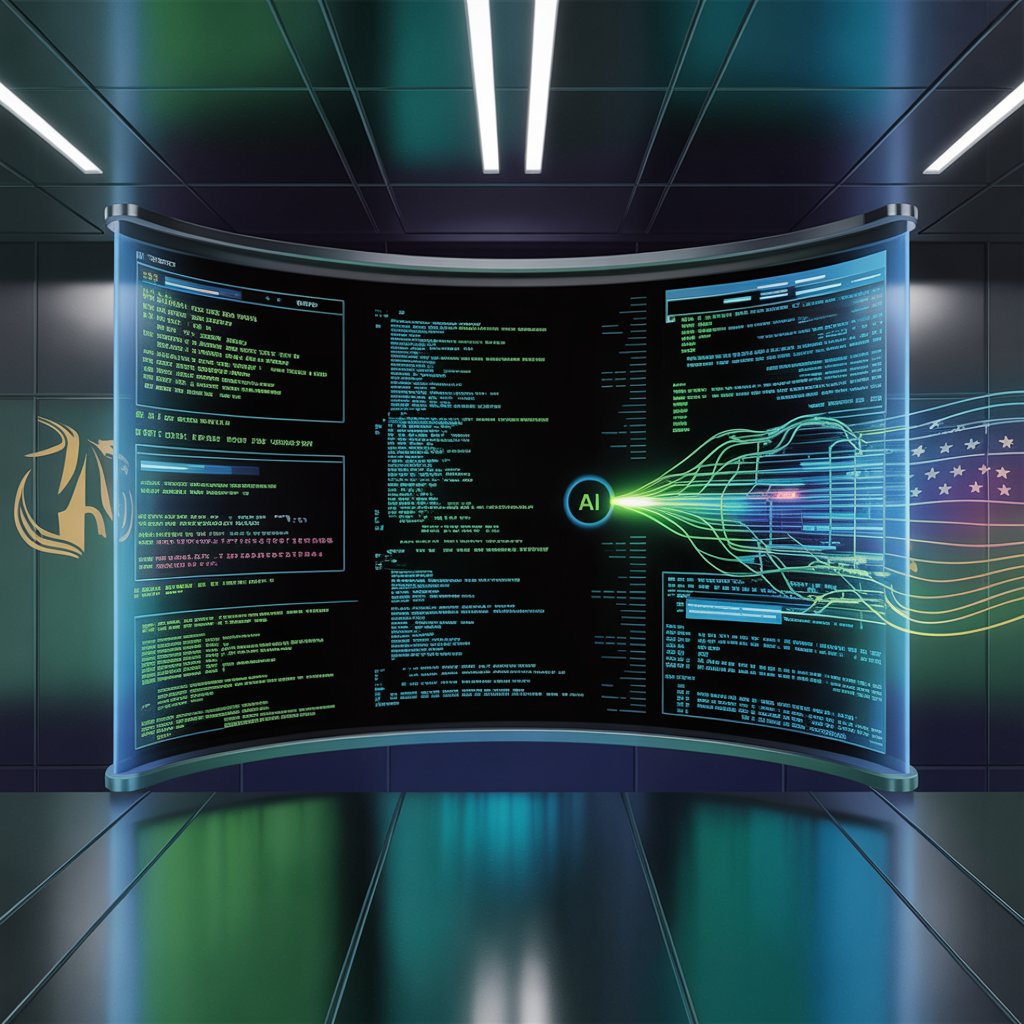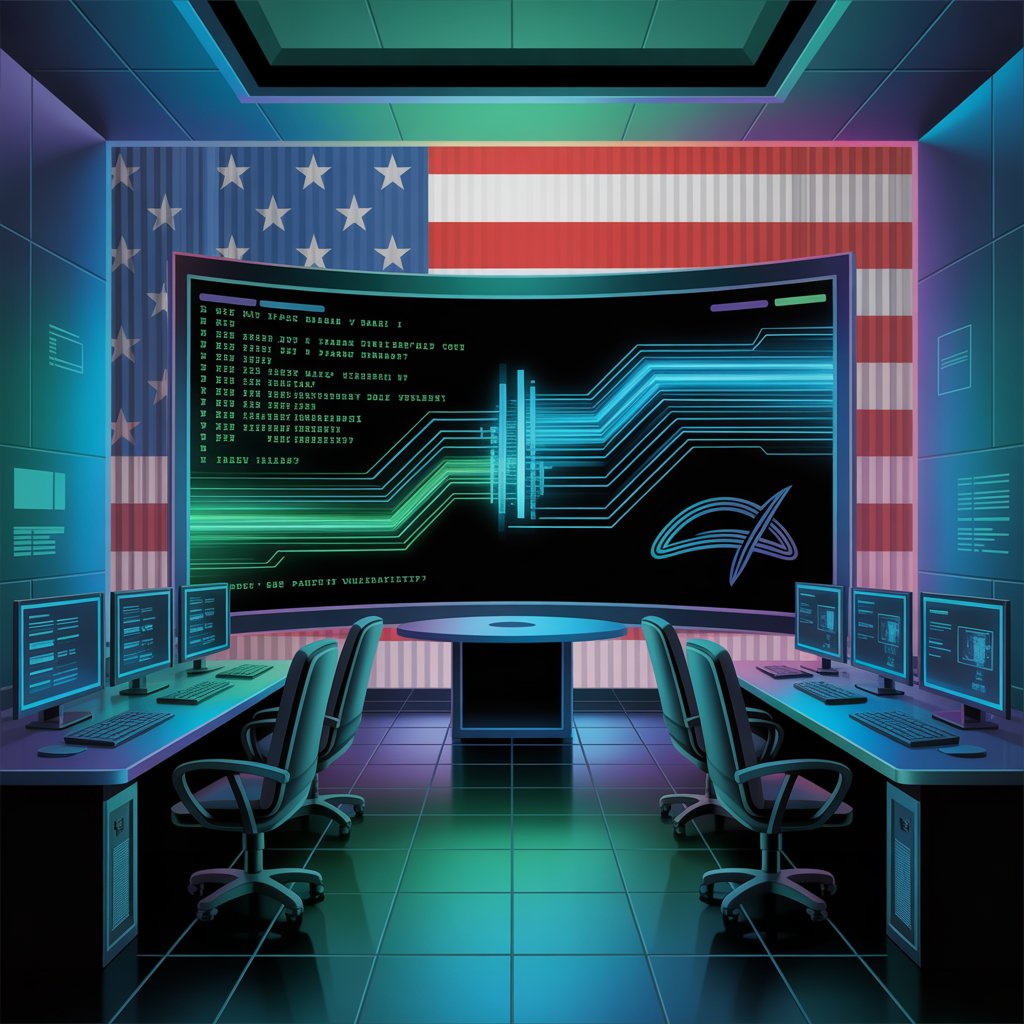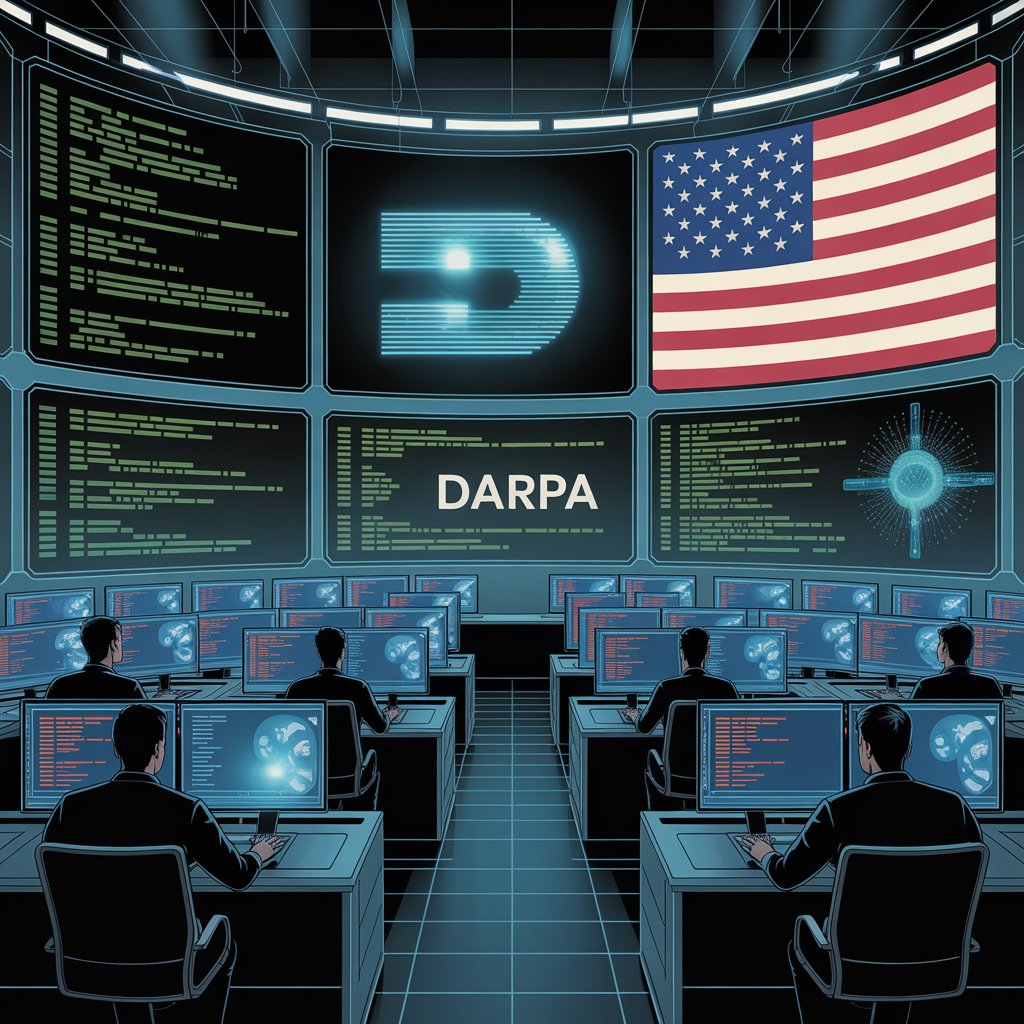DARPA’s AI Cyber Challenge 2025 delivers autonomous vulnerability patching breakthroughs across U.S. cybersecurity innovation and national security.
DARPA’s AI Cyber Challenge: Autonomous Bug Patching Breakthrough
Introduction
Imagine a future where cutting-edge software flaws are detected and patched automatically, without lengthy manual intervention. That future is now a reality—thanks to DARPA’s AI Cyber Challenge, a bold experiment in machine learning for bug fixing that has rewritten how we think about AI in cyber defense. From the high-stakes worry of legacy infrastructure to the promise of autonomous vulnerability patching, the U.S. is witnessing a game-changing leap in government-funded AI projects.

Setting the Stage – What Is the DARPA AI Cyber Challenge 2025?
Launched as AIxCC in 2023, DARPA’s Artificial Intelligence Cyber Challenge was a two-year competition aimed at encouraging the creation of novel cyber reasoning systems (CRS)—AI systems that automatically detect and patch vulnerabilities in open-source code underpinning critical infrastructure across the United States DARPAaicyberchallenge.com.
By leveraging machine learning for bug fixing, DARPA partnered with ARPA-H, and major AI players such as Google, Microsoft, OpenAI, and Anthropic, contributing model credits and expertise to empower competitors aicyberchallenge.com+1.
The Competition Unfolds – Semifinals to Finals
Semifinal Highlights
In 2024’s semifinal round, about 40 teams competed, and their CRSs discovered 22 unique synthetic vulnerabilities and patched 15 automatically—drawing attention to AI’s emerging force in cyber defense AxiosDark Reading. One system even found a real-world vulnerability in SQLite3, amplifying the real-world relevance of the DARPA AI challenge 2025 Dark Reading.
Final Showdown at DEF CON 2025
The final battle played out at DEF CON 33 in August 2025. Seven teams raced to autonomously spot and mitigate injected bugs in more than 54 million lines of open-source code, simulating live threats to U.S. infrastructure CyberScoopDARPA+1.
Team Atlanta—a global collaboration including Georgia Tech, Samsung Research, KAIST, and POSTECH—clinched the top prize of $4 million for their AI-powered system’s superior ability to detect, prove, and patch vulnerabilities AxiosCyberScoopNextgov/FCW.

The systems discovered 77% of injected bugs and patched 61%, averaging just 45 minutes per patch—a stunning improvement from the 37% detection rate seen in the semifinals AxiosCyberScoop. Along the way, they also uncovered 18 real-world zero-day vulnerabilities—an unprecedented feat AxiosCyberScoop.
Why It Matters – U.S. Cybersecurity Innovation & National Security
Addressing Critical Gaps
As DARPA Director Stephen Winchell emphasized, many essential codebases underlying U.S. infrastructure carry technical debt—aging, vulnerable software that is too vast for manual patching to address effectively CyberScoopDARPA. Justin O’Neill from HHS further warned that healthcare systems average 491 days to patch vulnerabilities, compared to the 60–90 day norm—highlighting a clear readiness gap, and why real-time cyber threat detection matters CyberScoop.
Democratizing Cyber Defense
Open sourcing several finalist CRSs (with the rest following soon) makes autonomous vulnerability patching technology available to defense firms, infrastructure operators, and government agencies, creating a public-good ripple effect DARPAAxiosCyberScoopNextgov/FCW.
Moreover, DARPA and ARPA-H are investing additional prize funds (e.g., $1.4 million) for teams that integrate their CRSs into real-world use, especially in healthcare and other infrastructure-rich sectors—boosting civilian readiness DARPAAxiosCyberScoop.
This U.S. cybersecurity innovation is poised to serve as a model for future government-funded AI projects that either fill workforce gaps or radically accelerate threat response.

Expert Voices and Real-World Applications
“DARPA’s AI Cyber Challenge exemplifies what DARPA is all about: rigorous, innovative, high-risk and high-reward programs that push boundary lines.” – DARPA Director Stephen Winchell DARPA
“AIxCC has fundamentally changed our understanding… automatically finding, but more importantly fixing, vulnerabilities in software.” – Kathleen Fisher, DARPA’s Information Innovation Office Axios
“Our hope is this technology will harden source code by being integrated during the development stage, the most critical point in the software lifecycle.” – Andrew Carney, AIxCC Program Manager CyberScoop
These quotes underscore both the technological leap and the ethical AI in cybersecurity promise—automating historically human-centered tasks to dramatically elevate response timeliness and accuracy.
Real-world applications are already in motion. Healthcare providers, rural municipalities, and utility operators—traditionally resource-constrained—can now potentially integrate autonomous CRSs to detect and fix vulnerabilities before attacks strike, bolstering national security and AI resilience.
Challenges, Ethical Concerns & Future Prospects
Challenges That Remain
- Complex vulnerabilities: AI systems still struggle with deeply nested or logic-heavy bugs, especially in low-level languages like C. In the challenge, teams patched zero-day Java vulnerabilities more successfully than C ones CyberScoop.
- Deployment hurdles: Organizations must trust and verify AI-generated patches—a process that requires rigorous validation, auditing, and security reviews.
- Skill gaps & integration: Many agencies lack in-house experience with these tools, which could delay adoption unless accompanied by robust training and support.
Ethical and Security Considerations
- Over-reliance on AI: There’s a risk of blind trust—automated fixes may introduce new bugs or fail to consider broader system context.
- Policy and liability: Who’s responsible if an AI-generated patch causes issues?
- Transparency and explainability: Ensuring that CRSs provide understandable, auditable explanations for the patches they suggest remains an imperative.
The Promising Road Ahead
The challenge’s rapid improvement from 37% bug detection in semifinals to 77% in finals showcases AI in cyber defense potential as it continues to evolve AxiosCyberScoop.
Open source adoption, government funding, and potential commercialization of CRSs are paving the way for integration into development pipelines, continuous integration systems, and national cyber defense strategies.
We can envision a future where embedded CRSs operate alongside human engineers—constantly analyzing code changes, flagging vulnerabilities, suggesting patches, and even acting autonomously within defined safety boundaries. That vision aligns with the DARPA Cyber Grand Challenge’s ethos, now evolved with modern machine learning for bug fixing Wikipedia.

Conclusion
DARPA’s AI Cyber Challenge, launched as AIxCC in 2023, has proven that autonomous vulnerability patching is not just a futuristic idea—it’s here, providing a powerful leap forward in U.S. cybersecurity innovation. Through a combination of elite teams, government and private sector collaboration, and intense competition, the 2025 results deliver a clear message: AI in cyber defense is maturing rapidly, and its integration into the defense and public sectors could redefine how we fend off digital threats.
While challenges remain—ethical, technical, and organizational—the momentum is undeniable. With open-source CRSs now available, and further distribution and commercialization underway, every safety-critical system operator should pay attention. From rural hospitals to energy firms, the future of AI-driven hacking prevention is arriving—and it’s defending us, one patch at a time.